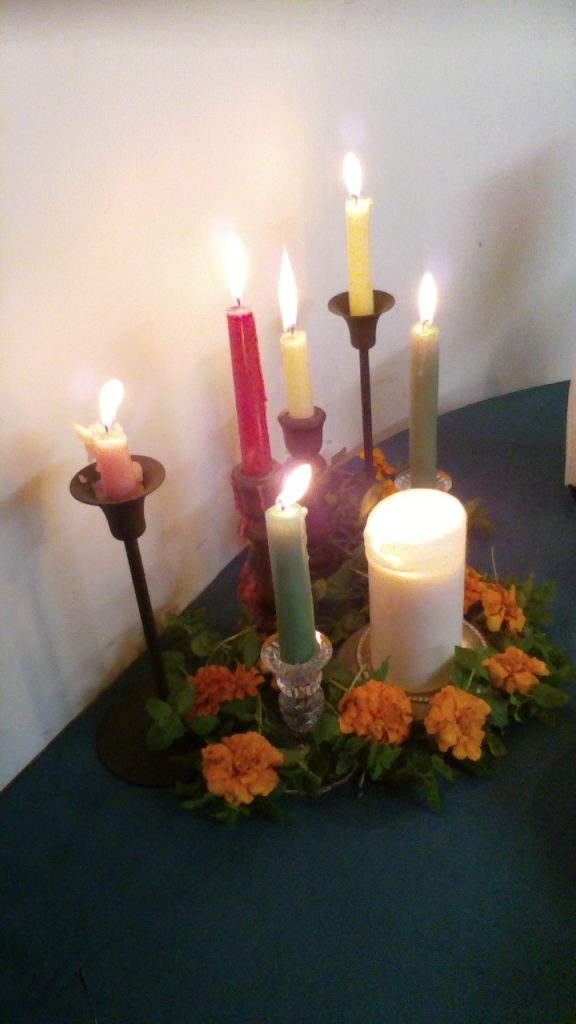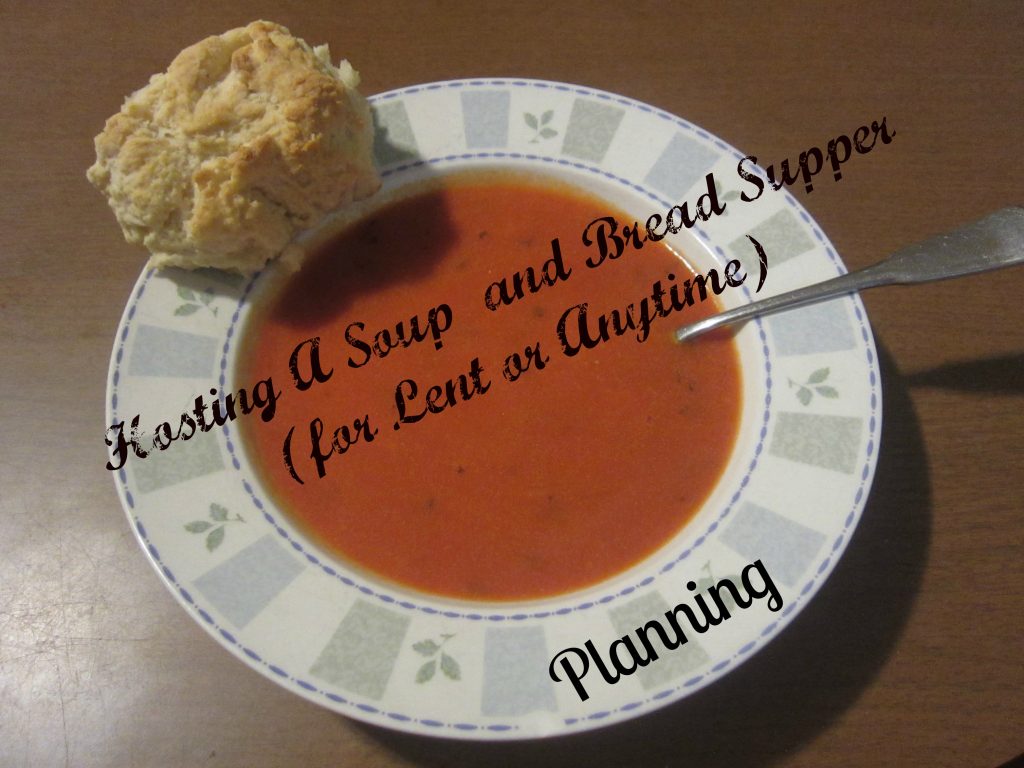So here we are. Almost Lent and we’ve been up here a year and I’m thinking it’s time to start having weekly suppers again. ?I don’t really want to commit to doing it all the time (we’ll have to take a break when Number Five gets here at least) but for the six weeks of Lent it’s doable.
Anyway I posted something about it on Facebook, and a friend in another state got inspired to host her own Soup and Bread Supper and that made me think I should run a little series on the topic. A combination of how-to and recipes that anyone can use.
Of course the first step is planning. ?I like to keep these suppers loose and easy- not a real set menu, never any real idea of how many people, and the “program” basically being food and fellowship, but easy going is easier with some pre-planning and prep work!
Step One:
Think about what kind of supper you want to have. Is the point the food? The fellowship? Or some activity that you will do together with your guests?
If the point is the food you will probably want to do most or all of the cooking yourself, perhaps giving out a theme or assigning people dishes to bring.
If the fellowship is the point then you may not need to do much cooking but you will need to put thought into seating and serving arrangements that will make discourse easier.
If you want to have a certain activity, you may want to do that before eating as it can be difficult to get people to focus on the activity when the visiting is going well or to resume visiting once the activity is completed.
Step Two:
Plan the serving and seating arrangements. I find a buffet style meal the easiest to serve and the easiest to incorporate dishes into as people arrive with food that they have prepared. I generally push my dining table against the wall and serve from one side with the water tank and any other drinks on a separate serving table. Some people will bring their food on a serving plate with a utensil, others may need you to provide these items.
If at all possible use real plates and silverware instead of paper and plastic. Using china, glass and silverware sends a signal to your guests that they are important enough for you to wash dishes for them, and making people feel valued is ?key to successful hospitality! I use a tablecloth of some kind and a few pretty serving dishes. Tablecloths can be a pretty sheet of appropriate size and serving dishes of different sizes and styles can easily be found at thrift stores. When we had suppers every week I rotated my table decor (tablecloth and candles) according to season and noticed how much people appreciated the attention to detail.
Seating doesn’t have to be fancy- for most of our time doing this in Virginia our chairs were salvaged from a high school auditorium! There does have to be enough seating and it should be set out in little groups so that people can mingle and have discussions without having to talk to the whole group at once.

Flowers and candles don’t take long to arrange (and take less time the more often you do it) but brighten up a rainy fall day dramatically.
Step Three:
Will there be children at the supper? If so, take a little time to think about ages and needs. Many toddlers can eat off of their parents’ plates, but I have found it helpful to have some plastic plates and sippy cups available as it eases parental fears of their child breaking something and helps them to relax.
Older children can sit on the stairs if you have them, or kneel around a mini trampoline as ours often do.
Give a little thought too, to where children should play and what might need to be off limits. In Virginia, we kept the children in the main room with us and in the playroom/laundry room off of the kitchen and I put away any particularly noisy toys before the event.
Go over your expectations with your own children. I found that since ours were small at the time (six and under) that letting them stay up much past their regular bedtime did not work well. Instead I excused myself at a certain point, put them to bed and enforced that they stay there. Generally it was enough past bedtime that they fell asleep quickly! If there are other children in attendance the point at which your children go to bed is a good time to bring out quiet activities such as coloring or play dough.
Step Four:
Cooking of course is an important part of all of this. ?Depending on what day of the week you are hosting, you may be able to do a fair bit of the cooking ahead of time and simply heat things up before people arrive. This will not be true of your breads which are always much better hot and fresh, so think about the timing involved.
Don’t worry about it too much though, there is always some wiggle room in the timing, as it takes twenty to thirty minutes for people to arrive, greet each other and settle. You can let the visiting go on for a bit too and then watch everyone leap up when you announce “Hot bread is on the table!”


Good tips!
And another log on my wanna-bake-bread fire.
Do it! You grew up hosting people, it should be easy!